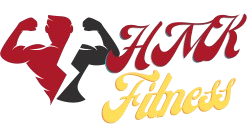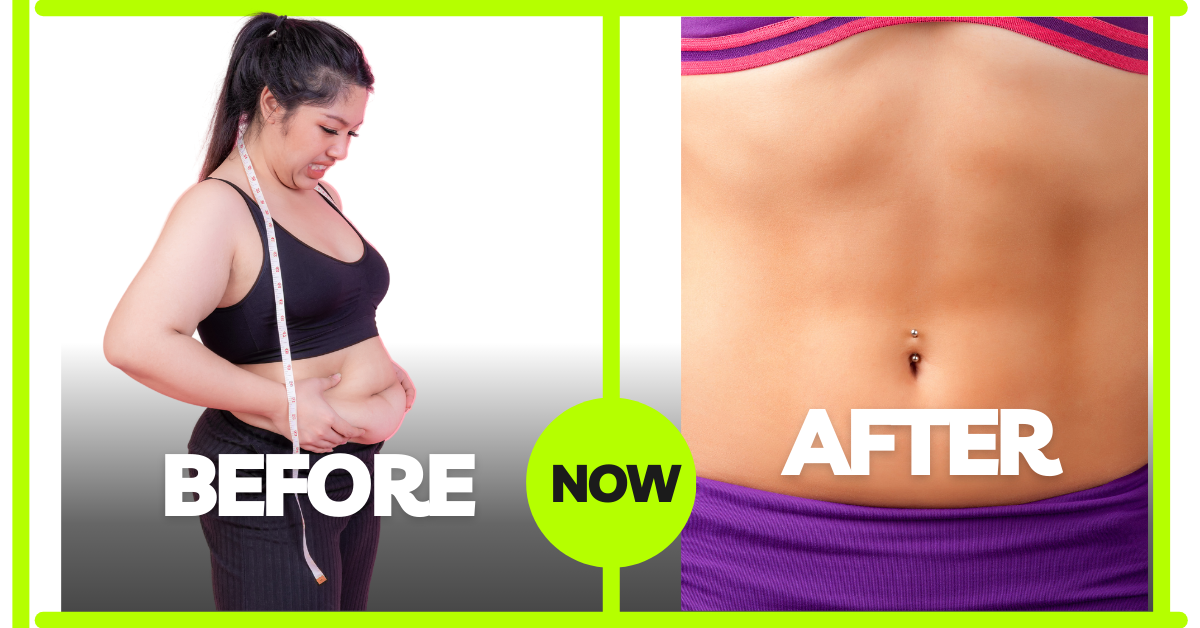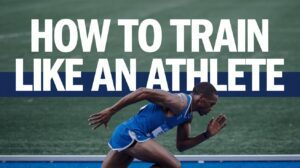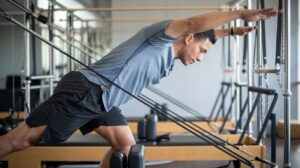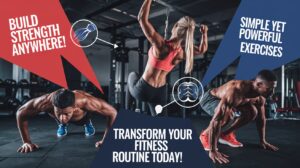Table of Contents
ToggleIntroduction:
In this blog, you will learn about six pack exercises for women. A healthy and fit body is built on a strong middle part. To women, building up their core is not merely establishing a flat stomach or visible six-pack abs but overall stability to improve posture and support everyday movements. Even though having an attractive midsection looks good, it also plays an important role in averting injuries and maintaining equilibrium.
Contrary to what most people think, getting a six-pack is not just about doing endless crunches but involves a combination of specific exercises, proper dieting, and general fitness. This guide will outline some of the most effective exercises for women with six packs. These exercises can build your core muscles, ensuring you achieve those toned abs that have always been your target. Whether you are a beginner or have already done some core work, this training will challenge your muscles and boost your fitness levels.
Understanding Core Muscles:
What Are Core Muscles?
You need to know what makes up your core muscles to get a six-pack. The core isn’t just about your abs; it’s a complicated group of muscles, including rectus abdominis, obliques as well as transverse abdominis, which mainly serve to stabilize our bodies where they are located, support our spines and enable us to do almost all activities that require physical movement quite easily.
Rectus Abdominis:
This muscle is typically associated with 6-packs; situated vertically down over the front area of the abdomen responsible for flexing the spine giving one that coveted ripped appearance.
Obliques:
found on either side of the torso these are divided into two parts- external/internal varieties; twisting and bending movements which boost both tone & strength throughout this region take advantage of them.
Transverse Abdominis:
Its deep muscle wraps around like a corset, providing stability and helping out with everything we do, from standing still again after sitting for long periods easier since it has been shown to strengthen the lower back and reduce the chance of back pain.
Also, Read the Ultimate Long Head Bicep Workout Guide.
How Core Strength Affects Overall Fitness:
Core strength is not just about how attractive you look; it has far-reaching implications for your well-being and overall fitness. A strong core results in good posture, better balance, and increased efficiency in all other workouts. Your core muscles are always involved in nearly every movement, whether you are weight lifting, yoga, or running.
Women especially need strong cores since they carry groceries and perform complex athletic movements. Additionally, a strong core supports the lower back, decreasing the chances of difficulties as we age and, therefore, minimizing discomfort.
Six-Pack Exercise for Women:
Specific exercises are very important when trying to get six-packs. These are among the best six-pack exercises customized mainly for women’s health purposes only. The exercises will improve your muscle definition, increase your strength levels, and bring you closer to the flat stomach look you crave.
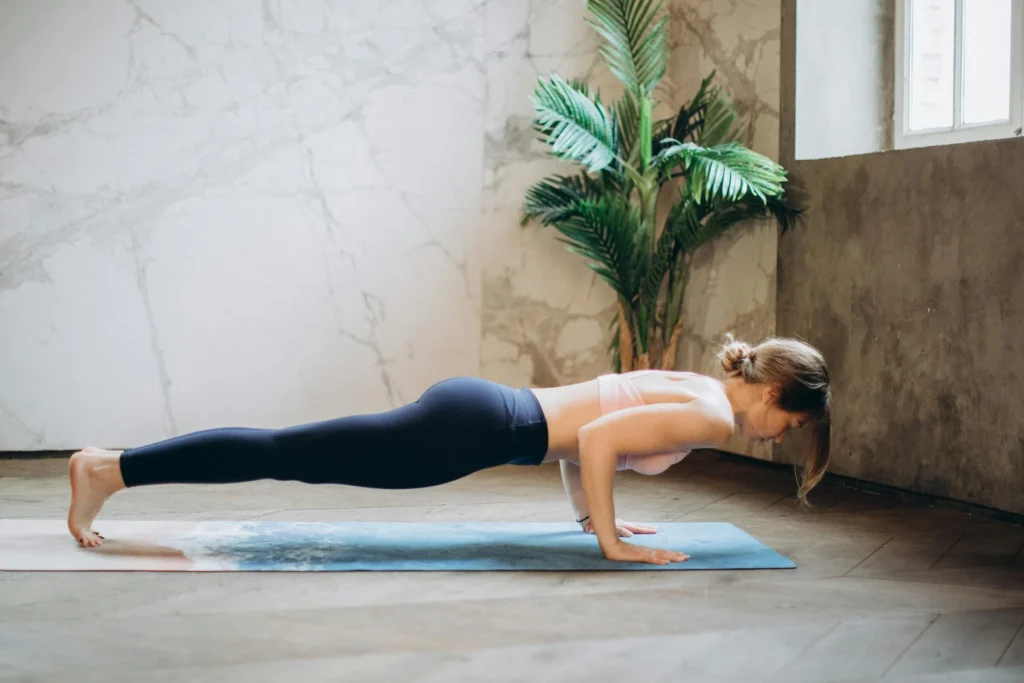
Exercise 1: Plank Variations:
One of the most effective ways to build a strong core is to do planks because they work out several muscles simultaneously. Planks may target the abs, but they also train the shoulders, glutes, and back muscles.
Standard Plank:
Begin in a push-up position with your forearms on the ground. This should ensure that your body is straight from head to toe by engaging the abdominal muscles in this position. At least 30 seconds minimum time should be held here if one doesn’t feel confident enough yet gradually increasing this duration as one gains more power over their system with time.
Side Plank:
Lie on your side with one leg over the other. Prop yourself up on one forearm and lift your hip untiltill you’re in a straight line. Hold for 30 seconds and change sides.
Plank with Leg Lift:
Start from the normal plank position. Slowly raise a single leg, making sure it is stretched, and wait for a few seconds before letting it down. Keep alternating between legs.
Tips: Focus on keeping your core tight and your hips level. For beginners, start with shorter holds and work your way up. Advanced variations like plank jacks or plank to push-ups can further challenge your muscles.
Exercise 2: Bicycle Crunches:
Bicycle crunches are potent when it comes to targeting the rectus abdominis and obliques hence a must-have in any six-pack workout routine.


- How to Perform: Lie on your back with knees bent, feet flat on the floor and hands at the base of the skull. Lift your head off the ground, then twist your torso while bringing your left knee towards your right shoulder until your elbow meets your knee. Pedal motion “switch” sides ensure that legs extend fully each time.
Benefits: Bicycle crunches not only target abs but also work oblique muscles helping to shape waistline better.
Exercise 3: Russian Twists:
Russian twists effectively target the obliques as well as improve rotational strength.
- How to Perform: Sit on floor with knees bent at 90 degree angle and feet flat. Leaning back slightly without rounding back; hold hands together or grasp weight in front of you; twist your torso right then left while engaging the core muscle group throughout the movement.
Variations: You can make it harder by lifting feet off the ground or including medicine balls/weights into the exercise which adds a resistance effect thus requiring more effort for execution.
Exercise 4: Leg Raises:
Leg raises specifically target the lower abs, which are usually stubborn to tone.
- How to Perform: Lie flat on your back with your legs straight. Place hands under hips for support. Bend both knees then extend them out in front of you and keeping feet together, lift both legs a few inches off the ground.
Tips: To avoid straining the lower back, keep it pressed onto the floor. Those who are beginning can start by bending their knees.
Exercise 5: Mountain Climbers:
Mountain climbers are dynamic workouts that combine cardio with core work, helping you lose fat while still attaining stronger abs.
- How to Perform: Start in a high plank position with hands below shoulders and body in a straight line from head to heels. Quickly drive one knee towards the chest and repeat on the opposite side without stopping leg movements. As each foot touches the floor, continue immediately pulling the other upward toward the other toward the same direction.
Benefits: In addition to targeting your core, you will also increase energy expenditure during this activity, which makes it an effective tool for burning fat.
Exercise 6: Flutter Kicks:
Flutter kicks effectively engage the lower part of the abs and hip flexors muscles.
- How to Perform: Lie down on your back with both legs outstretched on the ground. Raise your feet a few inches above the surface, then move them up and down rapidly, like scissors, just a few inches. Keep abdominal muscles contracted throughout movement while maintaining contact between the lumbar region and mat.
Tips: Begin with flutter kicks lasting about 20-30 seconds before gradually progressing to higher durations as strength improves. All these exercises are the best six-pack exercise for women.
Ways to Make the Most of Your Efforts Developing six pack abs is not just about doing the right exercises, it also involves engaging in appropriate habits and lifestyle choices that support those workouts. Below are some key tips to help you maximize your results and move closer achieving a toned and strong midsection.
Combining Cardio with Core Workouts:
Although core exercises are essential for gaining muscle definition, they alone may not be enough to reveal your six-pack. You have to include cardio in your routine if you want to burn off the layer of fat covering your abs.
- Recommended Cardio Exercises: Running, cycling, swimming, and high-intensity interval training (HIIT) – these options are great for metabolic boost and reduction of body fats. If moderate in intensity aim for 150 minutes per week or 75 minutes for very intense workouts.
- Tip: Combine your cardio sessions with core workouts to maximize fat loss and muscle definition. For example, a focused ab workout can be done 20 minutes after a HIIT session.
Importance of Nutrition:
Nutrition plays a vital role in revealing your six-pack. Even if you exercise every day; without proper dieting that matches your fitness goals it will be difficult for you to gain anything out of it.
- Focus on a Balanced Diet: Eat lean proteins, healthy fats and complex carbs as part of healthy dieting. Foods such as chicken, fish eggs as well as whole grains fruits and vegetables should form the basis of what you eat daily.
- Watch Your Calorie Intake: To lose body fat, you need to create a calorie deficit meaning eating less food than energy burned by all activities during the day/week/month/year). Monitor this using free online calorie tracking tools, e.g., Fitbit or My Fitness Pal apps, so you can keep track of how many calories are consumed vs burned off exercising plus other activities like walking around at work/home, etc.
- Avoid Processed Foods: Reduce your intake of sugar, refined carbs, and processed foods. These contribute to fat gain, most of which is around the midsection, which slows down progress.
- Stay Hydrated: Drinking a lot of water every day is important for good health and can also help you lose weight effectively. If you’re moderately active, try to drink at least eight glasses a day and more if very active or based on personal needs.
Consistency and Recovery:
Steadiness is everything when aiming for six pack abs. Overnight results are not feasible but through regular exercises and a healthy lifestyle, this will gradually change over time.
- Stick to Your Routine: Ideally, aim for 4-5 workouts per week that include core exercises, strength training, and cardio. Building muscle mass while burning body fat simultaneously must remain consistent throughout all fitness intervals.
- Prioritize Recovery: You should allow your muscles enough time to recuperate before they can grow stronger. Incorporate rest days into your schedule and get sufficient sleep each night. Rest prevents injuries while ensuring that one can give maximum performance during exercise sessions.
- Listen to Your Body: In case you feel tired or muscle soreness avoid forcing yourself too hard continually when having such kind of pain sensations within the muscles themselves always remember to take some rest that will be enough time needed by tissues recover properly then come up stronger than ever before.
What Most People Do Wrong Building six packs is a difficult task and many people unknowingly make errors that impede their advancement or can even result in injury. Familiarizing oneself with these common mistakes helps ensure effectiveness and safety while striving toward this goal.
Know About: A Simple Hack for Effective Weight Loss
Common Mistakes to Avoid:.
The commonest mistake is that you focus too much on abs exercises and ignore other muscles. In fact, targeting your core alone can lead to muscle imbalances and even strain.
- Balanced Workout Routine: Instead of endless crunches, opt for a well-rounded fitness routine consisting of strength training for major muscles in addition to cardio and flexibility exercises; this prevents overuse injuries and promotes total body strength and fat loss.
- Rest Days: Like any other muscle, let your abs recover. You don’t have to exercise your core every day. Give your muscles at least two days off after rigorous ab workouts.
Neglecting Form:
When doing ab exercises, it’s important to use the right technique. Poor form decreases the exercise’s effectiveness and increases the risk of injury.
- Quality Over Quantity: It is better to do a few reps correctly than many reps wrongly done. Each movement should be preceded by proper posture, alignment and breath patterns.
- Most Common Mistakes in Form: Arching your back when raising your legs, straining your neck when doing crunches or sagging your hips while planking are some most frequent errors committed during these exercises thus creating unnecessary pressure on lower back or neck leading to discomfort or injury.
- Tip: Ensure you have the right form with a few sessions with a personal trainer.
Ignoring Nutrition:
As earlier explained, what you eat matters just as much as how you workout if ever you want six-pack abs. This means poor nutrition can greatly slow down one’s progress.
Exercise Alone Won’t Cut It: Some people think that it is possible to outperform their diet through physical activities despite inappropriate meal plans; however, nutrition has an irreplaceable role in fat loss. Even having the best workout routine cannot expose the abdominal muscles unless good food intake supports the goals set by your diet.
Common Dietary Pitfalls: Stuffing oneself, taking heavy sugary snacks, or eating very low in protein could be some of these detrimental actions against progress. Therefore, ensure that your diet is in line with your fitness goals by eating whole foods and staying within the number of calories you need.
Lack of Patience and Consistency:
One mistake that many people make is expecting instant results when they are working on their abs to get six packs. Consequently, this leads to disappointment and burnout.
Set Realistic Goals: Be aware that achieving a six-pack takes time; it’s not instant. For the first few weeks, you might not see any changes, but as long as you work hard every day, there will be improvements.
Do not Jump from One Program to Another. Continue your exercise routine until you begin seeing results. Changing between various programs can discourage meaningful progress. Find a workout plan that suits your needs and stick with it.
Check Your Progress: Develop a habit of recording your workouts, meals, and body measures so that you can accurately track them. This helps motivate us and modify our routines if necessary.
Reasonable Expectations and Progress Measuring:
Getting a six-pack takes more than just physical exertion; it also requires endurance, hard work, and knowing what is realistic. To remain motivated and achieve results, you need to set achievable goals and monitor your progress.
Setting Realistic Goals
Although images of sculpted abs and aesthetically pleasing bodies may excite you, remember that everybody has a unique fitness journey. Your starting point, lifestyle, genetics, and level of commitment determine how long it would take to get six-pack abs.
Realistic Timeframe: Keep in mind that getting a six-pack can take many months or longer, depending on your current state of fitness and body composition. Achieving this goal involves not only the right exercises but also eating a balanced diet consistently with cardio workouts, thereby giving enough time for muscle growth and fat loss.
Personal Objectives: Instead of centering on the looks aspect of the abs, you should focus on other fitness areas where you should improve your lifestyle. Enhancing your core strength, cardiovascular stamina, or balance all contribute to the development of a strong and healthy body while working towards ripped abs.
Avoid Comparing: People are different; their bodies respond differently to exercise and nutritional requirements. You are advised against comparing your progress with others but instead look at yourself internally celebrating little victories along the way.
Keeping Track:
To stay motivated and adjust your schedule when needed, tracking how far you have come is important because even if what you are doing does not show up in the mirror immediately, it shows up in the long run.
Body measurements: Regularly measure parts such as the waistline and hips, among others, to help one understand any changes in body composition. Weight loss could be slow, for instance, but if the person measures his/her waistline, he/she might find that an inch has been lost, indicating fat reduction accompanied by muscle gain, too.
Progress photos: For example, take a shot of your midsection every three weeks. Over time, you will notice some slight changes that you can’t realize on a daily basis. To make accurate comparisons, ensure that pictures are taken under similar lights and conditions.
Workout logs: Maintain a record of workouts including the exercises done, number of sets and reps performed as well as any increased amount of weight lifted or intensity. This way one can know if their strength is improving since it is directly proportional to endurance improvement which are signs that there has been progress.
Diet journal: Tracking what one eats helps to control one’s self and regulate as necessary. You can track your meals and snacks in different ways either by using a calorie tracking app or just using a simple notebook in order to see how your eating plan affects you.
Celebrate Non-Scale Victories:
While getting a six pack is an awesome goal, don’t forget about other positive changes along the way. These non-scale victories can keep you motivated and remind you that fitness is about more than just aesthetics.
Increased strength: Pay attention to how much heavier the weights you lift or how long you can maintain a plank position. Those advancements imply your core is developing even if those abs aren’t showing fully yet.
Better posture: A strong core supports your spine and improves your posture at the same time; thus, feeling more confident when standing taller results in significant accomplishment.
More Energy: Regular exercise and a balanced diet can increase energy, making you feel more alive and competent throughout the day.
Improved Mental Health: Exercise is known to lower stress levels and enhance mood, so when you’re feeling more positive, less anxious, or more focused, these are important outcomes of your fitness regimen.
Conclusion:
Getting six pack abs is a fulfilling process that goes beyond just looks. It’s about building a strong core that enhances overall health and wellbeing as well as boosts self-esteem. As has been shown above, achievements emerge from a common sense approach involving specific exercises, healthy eating patterns, consistent training and realistic expectations.
With the help of the cardio focused exercises suggested in this guide and proper nutrition while avoiding some common mistakes make sure that you are prepared for long-term success Remember it’s not a sprint but a marathon Results take time and sometimes they might seem slow but every workout every healthy meal each moment of rest takes you closer to where you want to be.
